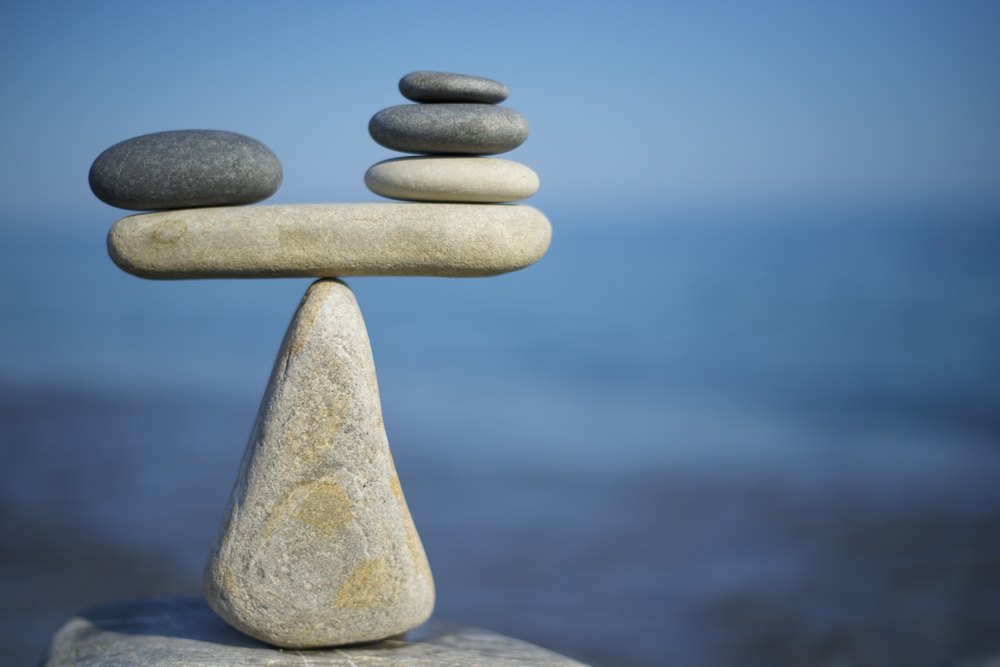7 Ways Life with ALS Is Similar to Life During a Pandemic

When someone asked my husband how he is doing in light of COVID-19, Todd replied, “Our life isn’t that much different. Now everyone else is dealing with what we have been living with for years.”
There are similarities between life during this pandemic and life with ALS.
1. We already engage in social distancing.
We spend a lot of time at home because it is difficult to go out. We already are germ-conscious and avoid people who are sick to protect Todd’s health. Now we are taking it to the next level.
2. We know stress.
With a terminal, progressive disease, we always live with stress. This pandemic has increased our stress, but the increase may not be as exponential as it is for people who are suddenly dealing with the realization of life’s fragility. I was talking about this with a friend, and she told me, “I think now everyone is feeling what you already felt.” While most of the nation went from little to moderate risk of contracting a virus that could be fatal, Todd already had a high risk. Every cold or flu virus is life-threatening for him now that his breathing has declined and he has little strength to cough.
3. We’re desperate for effective treatment.
Our government is fast-tracking vaccine and therapy development and testing for COVID-19. Our president recently said of repurposing a malaria medication for treatment of COVID-19 that “… we have to give it a try. Let’s see what happens. We have nothing to lose.” Many in the ALS community feel the same way about therapies in clinical trials, such as Nurown, which has helped some people. If only we could access it … what do we have to lose?
4. We live with uncertainty.
Those of us living with ALS don’t know what the timeline of progression will be because the disease manifests differently for everyone. It’s difficult to make decisions, such as selling or renovating a home, without knowing how much time we have. We have a similar uncertainty with this pandemic. Are we closing down schools for a month? For the rest of the school year? How bad is this going to get? How many lives will this virus take? Unlike a natural disaster, after which we immediately start picking up the pieces, COVID-19 doesn’t have an end date. The world is in limbo, unable to make long-term plans as we wait for the other shoe to drop.
5. We obsess over numbers.
I find myself checking the U.S. coronavirus map, watching as the numbers climb daily and hoping new cases aren’t registered in our community. It reminds me of when we were monitoring Todd’s forced vital capacity every six months until he got his feeding tube. Each time we went in, we knew the results would be bad news.
6. We feel anxiety over what could happen.
I feel anxious when I consider the implications of this pandemic. If I let my mind go down that road, I start to panic. I need to remind myself of lessons I have learned in living with Todd’s ALS for a decade. Instead of living with “what if,” I had to learn to live with “what is.” In the days following Todd’s diagnosis, when his only symptom was a weak arm, I was so anxious about the future that I couldn’t sleep. I found a counselor who helped me focus on today, rather than future possibilities and probabilities. When my mind was racing with thoughts of what was coming, my body responded as though it were my current reality — with anxiety. I had to discipline my mind to not imagine a future that had not yet occurred. We learned to plan for a difficult future without obsessing about what hasn’t yet happened.
7. There can still be good.
We look at what we still have. We’ve continued our family’s Friday night movie tradition, spending time together laughing. Boredom can breed creativity. When I limit my time on social media, I find time to write. Since schools shut down, my daughter has been working on the choreography for a dance routine. My kids, my mom, and I have spent time outdoors, cross-country skiing. With all that is going on, it is calming to see natural beauty, feel the warmth of the sun on our faces, and hear birds singing. I read stories of selfless acts and people supporting each other by shopping for elderly neighbors and those with compromised health. Several people have offered to pick up groceries for us. In the weeks to come, as “what if” becomes “what is,” I hope compassion will take root in all our hearts. Difficult situations can draw people together. That, too, has been our experience with ALS. As difficult as the disease is, it has focused our minds on what is most important — love.
***
Note: ALS News Today is strictly a news and information website about the disease. It does not provide medical advice, diagnosis, or treatment. This content is not intended to be a substitute for professional medical advice, diagnosis, or treatment. Always seek the advice of your physician or other qualified health provider with any questions you may have regarding a medical condition. Never disregard professional medical advice or delay in seeking it because of something you have read on this website. The opinions expressed in this column are not those of ALS News Today or its parent company, Bionews Services, and are intended to spark discussion about issues pertaining to ALS.







Paul White
Sounds about right and a good article and see all things differently sorry best I can type have to rest bye
Fran Finney
Wonderfully put, Kristin. I was a full time caregiver for my husband for the 5+years he lived with ALS, and we personally experienced all seven of those similarities.
Ellyn Maloney
You said everything I was thinking. Thank you for putting into words what has been floating around in my mind. Being asked to practice social distancing isn't that hard after dealing with ALS.
Cate
This is so good, When people ask me how I'm doing, I'm going to send this to them.